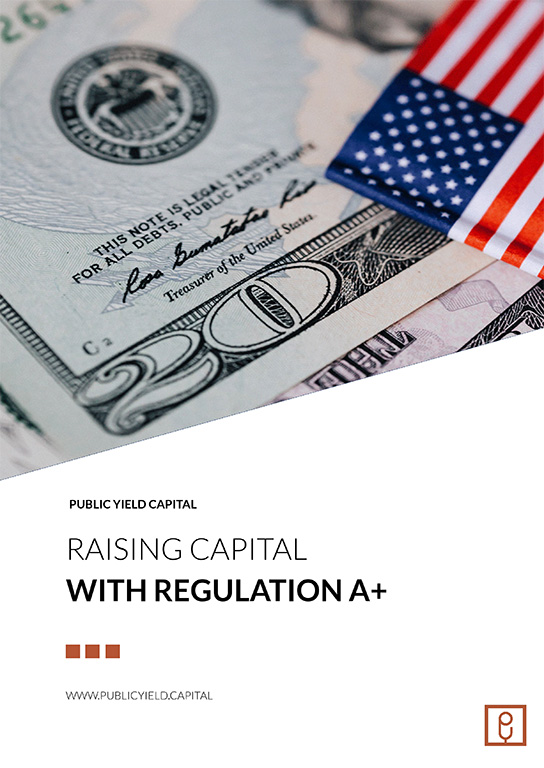
In today’s dynamic business landscape, access to capital is vital for growth and success. One avenue that has revolutionized the way companies raise funds and gain liquidity is Regulation A+. In this article, we’ll delve into the world of Regulation A+ and explore how it empowers companies to raise up to $75 million annually from a global audience of both accredited and non-accredited investors.
Regulation A+: Changing the Capital-Raising Game
Regulation A+, often referred to as Reg A+, has transformed the fundraising and liquidity prospects for businesses seeking a practical and cost-effective approach to raise capital or go public on prestigious stock exchanges like NASDAQ while retaining control of their company. This regulatory framework has ushered in a new era in the world of finance, offering additional attractive listing options post-offering.
One key distinction of Regulation A+ is that it’s considered a public offering. This means that during and after the offering, the Regulation A+ shares are deemed liquid by the SEC. Unlike traditional IPOs, there’s no mandatory lockup period unless a company chooses to impose one. This flexibility makes Regulation A+ an appealing choice for companies looking to go public and list on the NASDAQ or NYSE. Notably, a Regulation A+ IPO is more cost-effective and time-efficient than a traditional S-1 IPO. Some companies have even achieved SEC qualification in as little as 9 working days, while the average processing time for our clients as of summer 2022 is approximately 30 days. However, it’s prudent to anticipate around 60 days for a typical company’s qualification.
Diverse Listing Options
Regulation A+ provides companies with various listing options, including the OTCQB, OTCQX, and several Alternative Trading Systems (ATS). ATS options have emerged as a positive development for companies seeking liquidity for their investors and founders without undergoing the rigorous NASDAQ listing process. One significant advantage of ATS is that it doesn’t allow shorting or naked shorting of securities listed on the platform. This is a crucial advantage, as stockbrokers can engage in naked shorting without the need to “borrow,” which can negatively impact the value of public companies. ATS adheres to SEC regulations that require stockbrokers to have “reasonable access” to borrow, enhancing investor protection.
Understanding Regulation A+ Tiers
Regulation A+ consists of two tiers: Tier 1 and Tier 2, each with distinct characteristics.
Tier 1:
- Allows raising up to $20 million.
- Open to investors worldwide.
- Companies can publicly advertise their offering.
- Financials are required, but an audit is not mandatory.
- Must comply with individual state Blue Sky laws, which can be time-consuming and expensive.
- No limit on investment amount for retail investors.
Tier 2:
- Enables raising from zero to up to $75 million.
- Open to investors worldwide.
- Companies can publicly advertise their offering.
- No state registration is required, simplifying the process.
- Requires audited financials.
- Limits non-accredited investors to investing up to 10% of their annual gross income or net worth.
Advantages of a Regulation A+ Funding Campaign
- Control Over Your Company’s Destiny: Regulation A+ offers CEOs the advantage of retaining control over their company’s destiny, a key distinction from traditional venture capital.
- Customer Traction and Credibility: Companies with strong consumer appeal benefit from Reg A+ by marketing to thousands of investors, strengthening their brand and credibility.
- Liquidity for Investors and Insiders: Regulation A+ shares are considered liquid and can be resold without restrictions. This provides flexibility for investors and insiders.
- Accessible to Early-Stage Companies: Startups and early-stage companies can also leverage Regulation A+ for fundraising.
- Conversion of Stock Classes: Regulation A+ enables the conversion of all stock classes to common stock, offering investors actual liquidity.
- Attracting Institutional Investors: SEC qualification of Regulation A+ is viewed positively by institutional investors and strategic partners.
Testing-The-Waters(TM)
Regulation A+ allows companies to gauge investor interest cost-effectively through Testing-The-Waters(TM) before committing to an SEC filing and audit. This program enables companies to market themselves with minimal restrictions, leveraging social media, email, online advertising, and other channels. Potential investors can make non-binding reservations during this phase.
Secondary Offerings
Public companies fulfilling SEC reporting obligations can conduct secondary offerings via Regulation A+. This expansion of Regulation A+ has encouraged established, publicly traded companies to utilize this mechanism for growth. This, in turn, has enhanced the credibility and popularity of Regulation A+ fundraising.
Timeline for a Regulation A+ Offering
- Step 1: Choose the appropriate funding method, seek legal advice, and engage marketing agencies.
- Step 2a: Decide whether to involve a broker-dealer for investors in specific states.
- Step 2b: Select an auditor experienced in Regulation A+ and initiate the audit process.
- Step 2c: Begin legal preparations and document gathering.
- Step 3a: File Form 1-A with the SEC.
- Step 3b: Develop offering materials and marketing campaigns.
- Step 4: SEC qualification and going live to investors.
- Step 5: Initiate first closings.
- Step 6: Continue marketing until the fundraising goal is reached or the maximum allowed capital is raised.
Costs for a Regulation A+ Offering
Expect cash costs of approximately 12% to 14% of the capital raised for offerings above approximately $8 million. Primary expenses include marketing, Form 1-A legal filing, audit, broker-dealer fees (if applicable), and other costs. Companies are advised to have a minimum of $150,000 on hand before initiating a Regulation A+ offering to cover initial expenses.
Regulation A+ has opened doors for companies of all sizes to access capital and gain liquidity while retaining control. Its innovative approach to fundraising has revolutionized the financial landscape, making it a compelling choice for businesses seeking growth capital and investor engagement.



